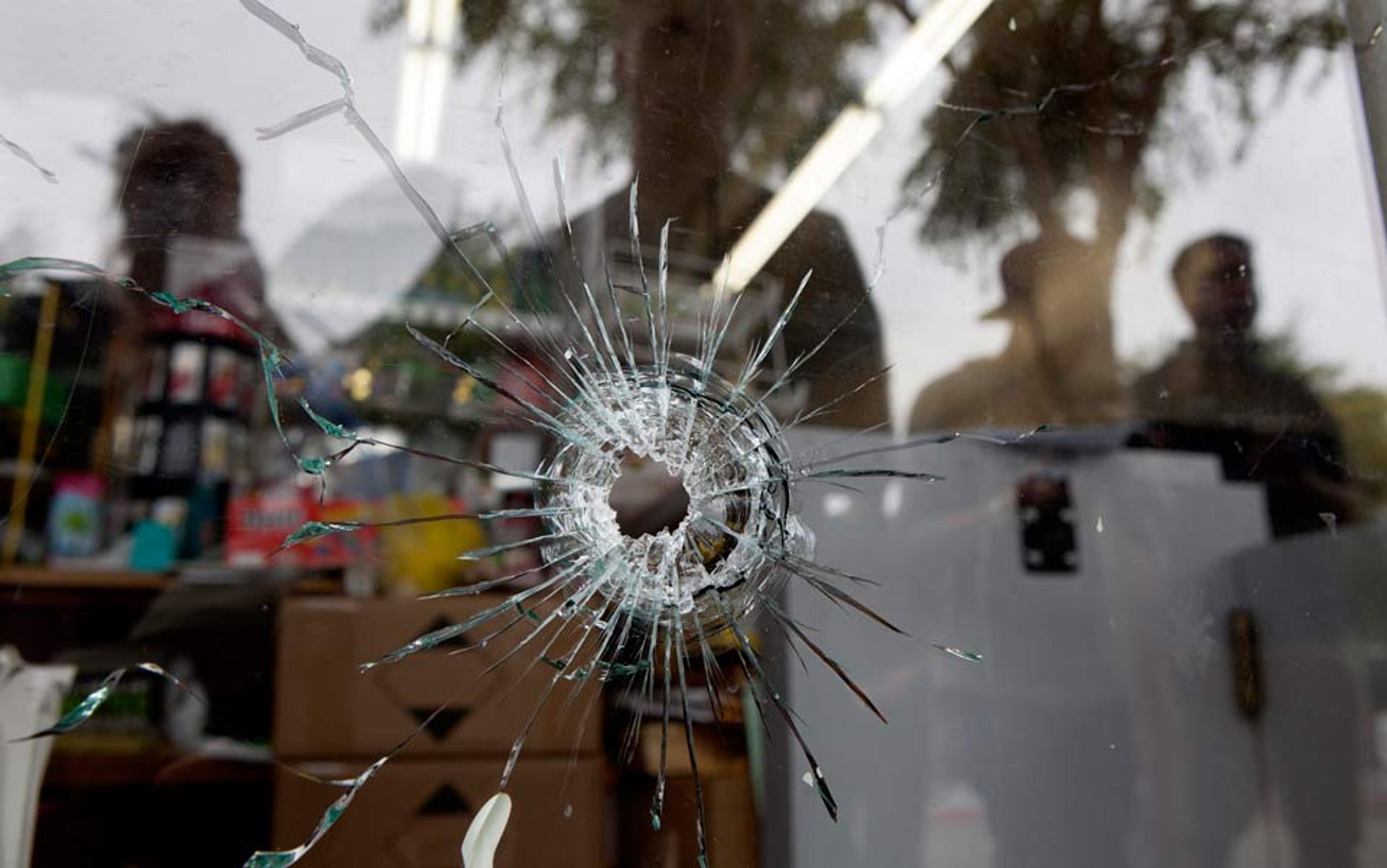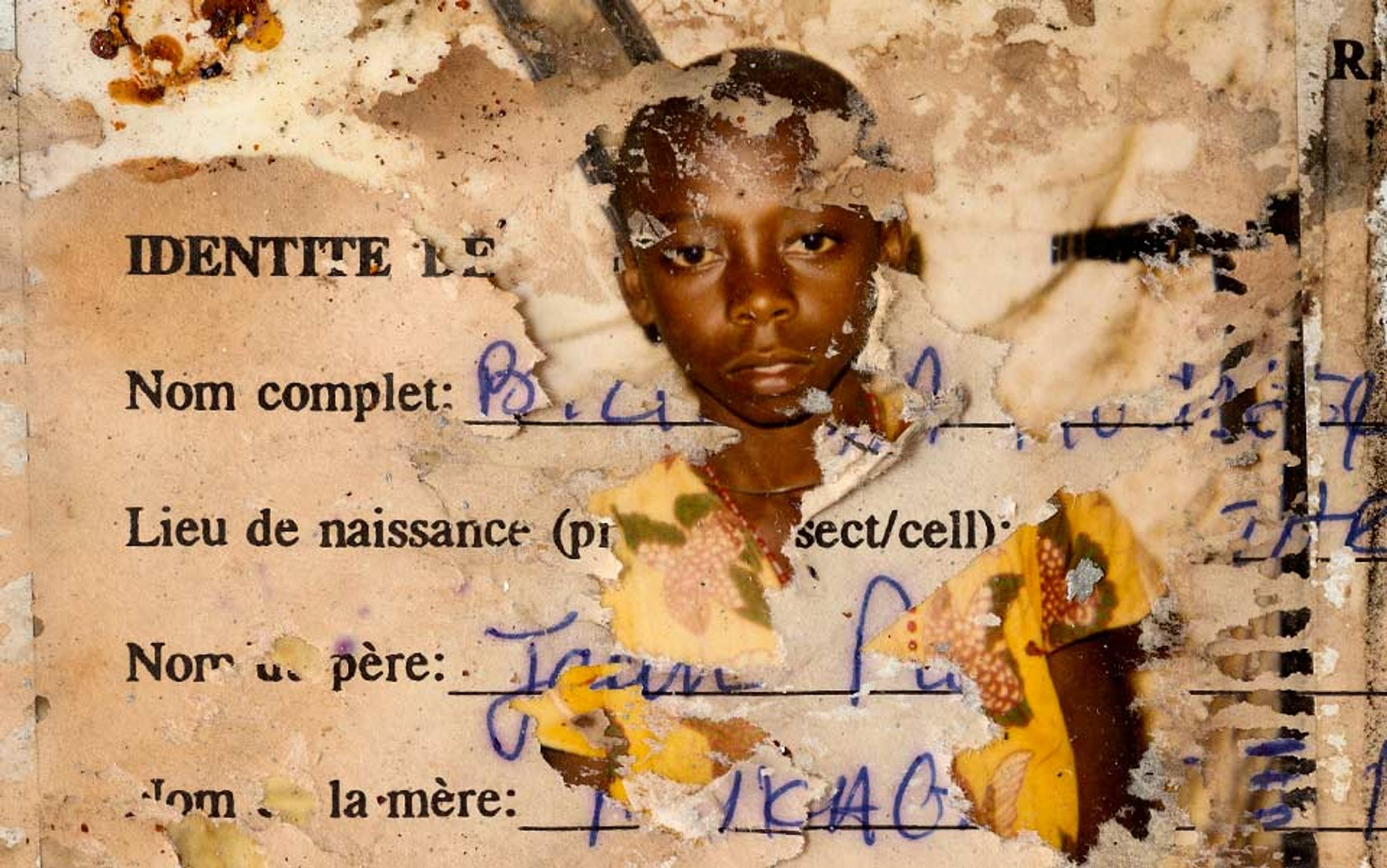‘When I was 14 years old, this guy beat me down in the streets. And my stepfather took his life right in front of me. And I felt good about it, really.’
Tio, in the documentary, The Interrupters (2011)
In his book Evil: Inside Human Violence and Cruelty (1999), the psychologist Roy Baumeister argues that people believe most perpetrators of violence to be sadists who gain pleasure from the suffering of innocent victims. Especially for the most heinous crimes, we can’t help but see the perpetrators as ‘bad’ people: inhuman monsters who lack basic moral feeling. Baumeister called this phenomenon ‘the myth of pure evil’. A myth because it isn’t true.
In spite of widespread beliefs about its existence, sadism is so rare that it is not even an official psychiatric diagnosis. Its closest relative is psychopathy, but psychopathy is not characterised by malevolent joy at the suffering of others. Admittedly, psychopaths lack moral emotions and empathy toward victims. And they can be quite violent: in large-scale studies of criminal offenders, it has been found that around 10 per cent of violent crimes are committed by those who score above the cut-off for psychopathy, whereas such people make up less than 1 per cent of the general population worldwide. Clearly, psychopaths account for more than their fair share of harm.
But that still leaves the vast majority of violent crime unexplained. Non-psychopathic people are hurting others in much greater numbers than the psychopaths. These people aren’t monsters. What motivates them?
Most of us will never engage in an act of extreme brutality. We will never shoot, stab, or beat someone to death. We will never rape another human being or set them on fire. We will never strap a bomb to our chests and detonate ourselves in a crowded café. And so, when faced with these seemingly senseless acts, we find ourselves at a loss. What possible purpose could they serve? Fundamentally, why do people hurt and kill one another?
It sounds like an unanswerable question. Yet there is an answer. It is simple, powerful and very disturbing. We fail to recognise it almost everywhere it matters. But if we really want to solve the problem of violence, there is nothing for it. We have to risk a kind of understanding that threatens our own values, our own way of life. We have to gaze into an abyss.
At present, there are two dominant approaches to understanding violence. Both fall short. The first is what I’ll call the disinhibition theory. Maybe, the story goes, even ordinary people have violent impulses that are usually held in check. When their moral sense breaks down or is somehow blocked, they give in to their dark side. Picture the man who knows that beating his wife is wrong but who, after a long day at work, loses his temper and takes it out on her. Is he our typical culprit?
In 2007, the psychologist C Nathan DeWall at the University of Kentucky and colleagues published the results of an ingenious experiment to test this idea. First, they drained their test subjects of self-control. They wore down college students by making them resist a tempting dessert or avert their eyes from part of a computer screen. And? The students became more aggressive in their subsequent judgments and behaviours. For example, they were more likely to deliberately blast loud noise into the earphones of another person.
So far, so promising for the disinhibition theory. Yet the experiments detected a pattern in these aggressive tendencies: they arose only in response to a previous provocation. In the sound-blasting experiment, the aggression was directed towards a person whom the participant believed had given them an unfair review on a previous task. When no provocation was present, there was no statistical difference in conduct between participants who had been depleted and those who had not. In other words, the aggression wasn’t a random overflow. On the contrary, it looked like the test subjects were trying to get even.
Now, such experiments might well indicate that some violence is enabled by loss of self-control. But the disinhibition theory sidesteps the question of why we are motivated to be violent in the first place. The impulse has to come from somewhere, and the theory is silent about where that might be.
It might be worth pausing to ask ourselves what kind of answer we expect to find here. Does our propensity for aggression simply come down to a mishmash of various provocations and triggers? Or is there some universal, underlying pattern, a single key that captures the majority of violence in every culture throughout history? The latter option sounds like an ambitious goal for a sociological theory. But the second general approach to violence, which I’ll call the rational theory, is certainly ambitious.
On this view, violence is just a way to achieve instrumental goals. For example, killing rival heirs is sometimes a good idea if you want to be king. Whether it’s fighting among brothers or between nations, these rational-choice models predict that the likelihood of violence increases when its benefits go up or its costs go down.
The theory can boast some empirical successes. Richard Felson, Professor of Sociology and Criminology at Pennsylvania State University, found that the likelihood of fighting among siblings goes up when parents are present, because younger siblings are more likely to fight when they know their parents might intervene, thus reducing the potential costs to themselves. At the level of states, Vincenzo Bove, Associate Professor in Politics and International Studies at the University of Warwick in the UK, and colleagues recently found that foreign nations are much more likely to intervene in a civil war when the country at war with itself also has valuable oil reserves.
But once again, we find ourselves with a puzzle. People frequently resort to violence when, by any measure of practical utility, non-violent means would be more effective. As Baumeister and colleagues noted in the paper ‘Relation of Threatened Egotism to Violence and Aggression’ (1996):
Wars harm both sides, most crimes yield little financial gain, terrorism and assassination almost never bring about the desired political changes, most rapes fail to bring sexual pleasure, torture rarely elicits accurate or useful information…
In 2007, the anthropologists Jeremy Ginges at the New School for Social Research in New York and Scott Atran of the French National Centre for Scientific Research surveyed Israelis and Palestinians on the subject of the Middle East conflict. During these interviews, the researchers presented their participants with a series of hypothetical peace deals; some deals included material incentives for giving up disputed land. A peculiar inconsistency emerged. A subset of the respondents saw the disputed land as just another resource: they were therefore willing to trade it for financial compensation and sign the peace deal, just as the rational model predicted.
Other participants, however, saw the land as sacred, tied to their communal identity. For these participants, adding financial compensation reduced support for the deal. They showed elevated levels of anger and disgust, as well as increased enthusiasm for violence. The rational model cannot handle this kind of data. Adding material incentives should never make the deal worse, unless the relevant utilities that people care about are non-material in nature.
It looks like both leading theories of violence fail, for one reason or another. Neither the disinhibition theory nor the rational theory provides a complete picture for why people hurt one another. And to the extent that we rely on these theories to reduce violence, we will fail too. What are we missing?
I came to the topic by an indirect route. For me, the burning question was always about why people disagree about when and whether violence is called for. Why was beating children for disobedience more acceptable 50 years ago than today, and why is it more acceptable in the American south than in the American north? Why do Westerners respond with horror to the killing of women for sexual infidelity, while other parts of the world not only condone but encourage the practice?
To understand how attitudes could be so vastly different across cultures, I started working with the anthropologist Alan Fiske at the University of California, Los Angeles (UCLA). Together, we analysed violent practices across cultures and history. We examined records of war, torture, genocide, honour killing, animal and human sacrifice, homicide, suicide, intimate-partner violence, rape, corporal punishment, execution, trial by combat, police brutality, hazing, castration, duelling, feuding, contact sports, and the violence immortalised by gods and heroes, and more. We combed through first-person accounts, ethnographic observations, historical analyses, demographic data, and experimental investigations of violence.
The work was, frankly, depressing. No one wants to read about all the terrible atrocities that people commit. But it was also fruitful. We did in fact find a pattern in all the violence. There was a unifying theme, with all the predictive and explanatory power one could wish for.
There have been many cultures and historical periods where people did not particularly value happiness, or where they actively sought out suffering because they saw it as morally cleansing
Across practices, across cultures, and throughout historical periods, when people support and engage in violence, their primary motivations are moral. By ‘moral’, I mean that people are violent because they feel they must be; because they feel that their violence is obligatory. They know that they are harming fully human beings. Nonetheless, they believe they should. Violence does not stem from a psychopathic lack of morality. Quite the reverse: it comes from the exercise of perceived moral rights and obligations.
A mother in the American South beats her child because he disobeyed her authority, to protect him from himself, and to ensure that he becomes a responsible adult. Drill sergeants, gang leaders and guerrilla fighters brutally ‘beat in’ new recruits to create lifelong bonds with their compatriots and unflinching obedience to their superiors, both of which are fundamental to success in battle. A father in Papua New Guinea pours hot fat down the inner arm of his son and hopes he will endure it stoically because this is critical if he is to become a respected adult in the community. A boy gets into a fight because the other boy hit him first, and his father taught him that he must defend himself and never allow himself to be bullied; when the boy becomes a man, he gets into a bar fight because someone insulted his girlfriend and he must defend her honour.
A Saudi man paralysed in a fight requests that his attacker be paralysed at the exact same position on the spinal cord — and the judge looks into it. A brother in northern rural India kills his sister because her sexual infidelity has contaminated and shamed their family; her death is the only way to restore the family’s honour and prove to their community that they can be trusted. A US college student rapes a female acquaintance to ‘get back’ at the women who have rejected him and because he believes women are subordinates who are morally required to do as he commands. A suicide bomber in the Middle East kills himself and others in the name of an authority he respects and out of loyalty to his compatriots who will also die. A US fighter pilot bombs an ISIS target, killing several terrorists along with nearby civilians because his commander calculated it was an acceptable loss in order to achieve a greater good, the death of their enemies.
One can multiply similar examples without end. In every case, the violent act is perceived by the perpetrators, observers – and in some cases the victims themselves – as just.
At the same time, if violence is motivated by moral sentiments, what is it motivated toward? What are these perpetrators trying to achieve? The general pattern we found was that the violence was intended to regulate social relationships.
In the examples above, parents are relating with children; recruits and fighters are relating with peers and superiors; boys and men are relating with their friends; families are relating with their communities; men are relating with women; people are relating to gods; and groups and nations are relating to each other. Across all cases, perpetrators are using violence to create, conduct, sustain, enhance, transform, honour, protect, redress, repair, end, and mourn valued relationships.
Individuals and cultures certainly vary in the ways they do this and the contexts in which they think violence is an acceptable means of making things right, but the goal is the same. The purpose of violence is to sustain a moral order.
For many, this will seem incomprehensible. Surely pain is terrible. The core of anyone’s morality should be to minimise it, only bringing it about when absolutely necessary. But this presumes that the ultimate moral goods in life are the pursuit of happiness and the avoidance of pain. As reasonable as those might sound to us, they reflect modern, Western ideals. There have been many cultures and historical periods where people did not particularly value happiness, or where they actively sought out suffering because they saw it as morally cleansing. Late 16th- and early 17th-century Protestant religious manuals instructed readers that pain was a moral good to be pursued and delighted in. Public executions have often been popular spectacles, with families picnicking at hangings throughout the 18th and 19th centuries.
We might be tempted to write off these practices as historical accidents or the acts of sadists. But in the spring of 2011, Americans celebrated in the streets following the killing of Osama bin Laden and, as recently as last summer, Israelis gathered on hilltops to watch and celebrate bombs dropping over Gaza. Violence is still celebrated by everyday people.
Does this mean that it necessarily ‘feels good’ or that people are never conflicted when they engage in it? No. People hate hurting others. It can be extremely distressing and traumatic, and can require training, social support and experience to do it. But that’s true of many moral practices. It can be difficult to tell the truth or to stand up for what’s right. People often resist or fail to do what’s required of them. Most of us would agree that it’s morally right to jump into icy water to save someone who is drowning, but that doesn’t mean we relish doing it.
Perhaps this all sounds a little too convenient. Some violent individuals might say that their actions were morally motivated. How do we know that they are not simply lying after the fact? Surely it’s not difficult to make up moral justifications when one is actually motivated by selfishness or evil?
That’s a good question. Surprisingly, though, it doesn’t undermine the big picture very much. What we must remember is that the justifications perpetrators provide for their actions tell us a lot about the moral ideas of their community. If the American football player Ray Rice claims that his fiancée hit and spat on him before he punched her in 2014, it’s because he feels it mitigates his crime in the eyes of people he cares about. If people actually do care whether his statement is true, then Rice is right. The excuses that perpetrators offer reveal the moral standards of those being appealed to.
if dangerous people can be motivated by genuine moral beliefs, we face a troubling dimension to morality
Try assuming the opposite: imagine that moral excuses are always just a sham to get the perpetrator out of trouble. The first thing you notice is what a bad job they do. Suppose the perpetrator of some brutal crime wants to avoid jail. What should she say? She definitely shouldn’t claim that what she did was right or that the victim deserved it. That would be stupid. No, she should deny that it happened at all, or say that it was an accident, or that she wasn’t herself that day. Perpetrators do say that kind of thing all the time, of course – in court. But before the lawyers get a chance to groom them, they can often be found bragging about their deeds to friends and neighbours – the people, in short, who share their moral code.
Moral justifications for violence make so little sense as ruses that we have to assume they’re at least somewhat sincere. That’s an uncomfortable thought. If we accept that dangerous people might be motivated by genuine moral beliefs, we confront a troublingly subjective dimension to morality as such. At the very least, we must face the possibility that one can be sincerely wrong about it. And once you go that far, it’s a short leap to thinking maybe we’re the ones who are wrong, or that there’s nothing to be right about in the first place.
Perhaps this sounds like cheap relativism. But there’s a psychological tendency here we should take seriously. What, empirically speaking, happens when we stop thinking of moral values as objective facts that are true everywhere at all times, seeing them instead as subjective opinions that differ across cultures and history? Well, in the lab at least, it seems we lose our bearings.
In 2013, the psychologist Keith Holyoak at UCLA and I presented test subjects with evidence that certain violent acts – acts that the subjects themselves said they deplored – were viewed by others as morally acceptable. More specifically, we asked some of our subjects to read an article defending the rights of communities to perform female genital mutilation so long as it accorded with the community’s moral beliefs. Another group read an article claiming that female genital mutilation was unequivocally evil. A control group read an article about cooking. Remarkably, the participants who read the ‘relativist’ article were more likely to cheat on a follow-up test than participants who read the ‘absolutist’ article or the control group. Merely querying one moral conviction had the effect of undermining moral behavior in a seemingly distant domain.
It would be easier to live in a world where perpetrators believe that violence is wrong and engage in it anyway. That is not the world we live in. While our refusal to acknowledge this basic fact may have helped to orient our own moral compass, it has also stood in the way of interventions that might actually reduce harm. Let’s put aside the philosophical questions that arise once we accept that there is moral disagreement about violence. How does the message that violence is morally motivated aid our efforts to reduce it?
For years, we have been trying to reduce crime by enacting mass incarceration, by placing restrictions on the mentally ill, and by teaching potential perpetrators how to exercise more self-control. On the face of it, these all sound like plausible strategies. But all of them miss their target.
One of the most robust findings in criminology is that increasing the severity of punishment has little deterrent effect. People simply aren’t as sensitive to the potential costs of crime as the rational-choice model predicts they should be, and so efforts to reduce it by cracking down have failed to justify the immense fiscal and social costs of mass incarceration. Meanwhile, because most violent crimes are committed by psychologically healthy individuals, legislation that focuses on the mentally ill – for example, by stopping them from buying guns – would lead to only a small reduction.
Only when violence in any relationship is seen as a violation of every relationship will it diminish
Finally, if violence is not in fact a mistake from the point of view of the perpetrator, strategies intended to help him exercise better control over himself would miss the point. The convicted armed robber Daniel Genis recently described ‘aggression replacement training’ (ART), which inmates at his US prison were forced to attend if convicted of a violent crime:
ART class may have taught us how to avoid stabbing each other over spontaneous misunderstandings, but in fact, just about all of the violence I saw in prison was deliberate, planned… Rather different from the explosions of temper that the ART programmes intend to cure.
None of this is to say that such interventions should never be pursued, particularly in cases where they don’t cost much. Better background checks are probably a good idea. But if we really want to cut rates of violence, we must focus on its moral motives. Simply stated, violence must be made immoral. This must hold both for the perpetrators and the people they care about. Only when violence in any relationship is seen as a violation of every relationship will it diminish.
What about violence on the other side of the law? Advocates in the US have been pressing for the mandatory use of body cameras to deter acts of police brutality. Could that work? There is plenty of evidence to suggest that people are less likely to engage in behaviour that they believe is immoral when they know they are being watched. The thinking goes that if police know they are being watched, then they won’t do things they know are morally wrong. Yet often police and much of the public see nothing wrong with their actions. There is no data to suggest that people are less likely to perform actions that they think are morally right when they know they are being watched. Therefore, it’s not clear how useful body cameras would be unless there is a clear message from leadership and culture that prohibits the unnecessary use of violence.
In his work reducing gang violence in Boston, the criminologist David Kennedy helps to organise interventions. Killers are confronted by local leaders and the families of victims, who all express the wrongness of killing and insist that violence against anyone undermines their relationships with everyone. Legal sanctions are also present, but they are insufficient on their own. Critically, the message has to come from respected people within the killer’s own community. As Kennedy puts it: ‘their own ideas about right and wrong matter most; the ideas of those they care about and respect matter more’.
These programmes have been quite successful. At the beginning of the article I quoted an interviewee from the documentary The Interrupters, which tracked a similar Chicago programme known as ‘CureViolence’. The program hinges on getting trusted members of the community to intervene with moral appeals that focus on social-relational consequences, before retaliatory violence can erupt. A study of the programme found that it reduced shootings by 16-28 per cent in the areas where it was implemented.
It isn’t easy to change a culture of violence. You have to give people the structural, economic, technological and political means to regulate their relationships peacefully. Social groups have to learn to shame and shun anyone who hurts others. But it can be done. It has been done in the past, and it is happening as we speak.
Cultures do change. Globally, violence is on the decline. People everywhere are finding ways to satisfy their moral motives and social-relational aims non-violently. This does not mean our work is finished. People still hurt and kill one another because they believe that it is the right thing to do. But if their primary social groups make them feel that they should not be violent, they won’t be. Once everyone, everywhere, truly believes that violence is wrong, it will end.






